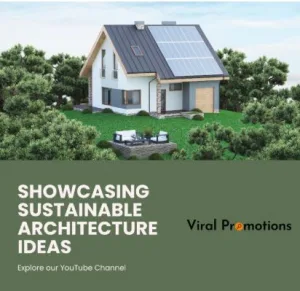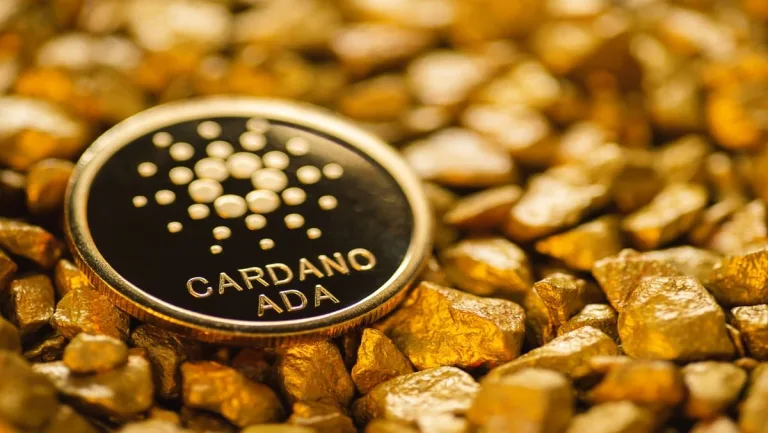Case Study: How Emerging Architecture Firms Use YouTube to Showcase Sustainable Design

Up‑and‑coming architecture studios are using YouTube to showcase sustainable design in a way that speaks to clients, fellow architects, and the wider green building world.
With eye‑catching visual content, clever collaborations, and informed planning, they’re transforming online audiences into genuine business leads.
Video Tours Highlight Eco-Friendly Materials and Techniques
One of the best ways architects use YouTube is through guided project tours — high‑quality walkthroughs of finished homes, offices, or community spaces that spotlight their sustainable features.
A passive design home tour, for example, might open with a wide drone view of the roof’s solar panel array before moving room-to-room to show triple-glazed windows, reclaimed wood floors, and rainwater collection systems. On‑screen notes point out each sustainable feature, while the narrator explains how it boosts energy efficiency or makes smarter use of resources.
This approach works because it’s visual proof—not just photos, but tangible movement through a real space. Viewers see the details in action: how a window catches light, how a wall texture changes with recycled material finishes, how a ventilation shaft hums quietly.
Such tours also give prospects new language to describe what they want. An office client might see a radiant flooring demo and decide it’s a fit, or a homeowner might recognize a greywater recycling setup from a video and request it in their design brief.
Client Testimonials Boost Credibility and Drive Inquiries
While tours show design results, testimonials give social proof.
Firms film brief interviews with clients inside or near completed builds. The clients share their experiences—how the process unfolded, how sustainable choices impacted comfort, and even whether the budget matched expectations. One homeowner might note the savings on utility bills; another could highlight better air quality thanks to natural ventilation.
Architecture firms often edit in b-roll of the project during these stories, so when a client praises “daylight-filled workspaces,” we immediately see them. This creates a connection between words and results—an important factor when viewers are assessing credibility.
These videos also address objections indirectly. If a potential corporate client worries about sustainable design costs, hearing another company describe long-term savings can shift their perception.
Consistent client storytelling builds a video library that does more than promote—the content educates by showing that sustainability can be practical, attractive, and cost-effective.
Collaborations with Influencers Expand Reach in Green Building Communities
Expanding viewership beyond the firm’s own network means tapping into eco-focused creators.
Emerging firms are partnering with YouTubers, architects, engineers, and sustainable living advocates who already have engaged audiences. The collaborations take many forms:
- Live Q&A sessions about material innovation
- Joint reviews of eco-friendly neighborhood developments
- Guest appearances in influencer-led “day in the life” building tours
For example, a mid-size design practice teamed up with an environmental engineer YouTuber to film a “Future of Sustainable Urban Housing” episode. The influencer’s audience brought thousands of new discoverers to the firm’s channel, while the firm’s behind-the-scenes expertise gave the influencer fresh, credible content.
These partnerships work because both sides bring value and existing trust. Rather than coming across as advertising, it works best when it feels like being part of the community — exploring green building ideas together with viewers.
Optimized Playlists Organize Content Around Sustainability Themes
Once videos are published, organization boosts impact. Firms use playlists to group content by theme—making the channel easier to navigate and increasing viewer watch time.
Typical playlist categories might include:
- “Solar Power in Architecture” (case studies + tech explainers)
- “Recycled Materials and Finishes” (product tours + before/after comparisons)
- “Net-Zero Energy Homes” (full builds + energy monitoring updates)
- “Sustainable Commercial Spaces” (office, retail, institutional projects)
Think of playlists as more than simple organization tools. They tell people, “This channel knows this subject inside and out,” and YouTube picks up the same signal — making it easier for your videos to land in front of people who care about the topic.
Updated playlists also encourage binge viewing. Someone arriving for a single net-zero office tour might end up watching a string of five related videos—each one increasing familiarity with the firm’s brand.
YouTube Analytics Guide Content Strategy for Maximum Impact
Publishing is only half the work—measurement shapes the next step.
Successful brands keep a close eye on their analytics to understand:
- Which videos bring in the most subscribers
- The exact moments viewers drop off
- How much traffic comes from Google, social platforms, and other sites
- How people engage through likes, comments, and shares
Patterns often reveal themselves in performance data. One firm may find that explainer videos on sustainable materials outperform broad-topic overviews, while another sees that mid-construction project updates sustain viewer attention more consistently than polished finished tours.
Data informs every creative choice — from format and duration to partnerships. If under‑six‑minute videos keep audiences hooked, edits follow suit. And when a series drives the most inquiries, it’s quickly scaled to maximize impact.
At a certain point in building their strategy, some of these firms work with specialist agencies to refine metadata, hook timing, and keyword alignment. Viral Promotions has collaborated with architecture practices to help evaluate performance trends and optimize publishing schedules through data-driven YouTube optimization for sustainable design.
Why This Works for Emerging Sustainable Architecture Firms?
The success of these YouTube strategies isn’t accidental. They work because they share useful knowledge that builds trust, tell engaging visual stories that make complicated designs easy to grasp, show real-world proof to ease any doubts, and naturally become part of communities by teaming up with trusted influencers.
When combined, these tactics create a feedback loop—discovery leads to interest, interest leads to contact, and completed projects produce more content fuel for the channel.
Bringing Sustainable Design to Life
As a leading platform for marketing and education, YouTube offers architecture firms promoting sustainable design unique opportunities: they integrate compelling visuals, authentic narratives, targeted collaborations, organized content flows, and iterative performance analysis to convert casual audiences into qualified prospects.
In a sector where differentiation is key, this mix of creativity and analytics-driven decision-making positions emerging firms for lasting growth while promoting environmental responsibility.
For firms aiming to differentiate themselves, the takeaway is clear: sustainable design should be showcased through more than just a portfolio image. On YouTube, it can come to life.
Frequently Asked Questions (FAQs)
- Why are video tours so effective for showcasing sustainable design?
They give a real-world view of materials and techniques in context, making eco features tangible for potential clients.
- Why do testimonials matter for getting inquiries?
They highlight real, measurable wins — like lower costs and better living comfort — reassuring prospects that your results are proven.
- What advantage do influencer partnerships offer?
They provide direct access to pre‑qualified audiences with a demonstrated interest in sustainability, resulting in increased exposure and strengthened brand trust.

